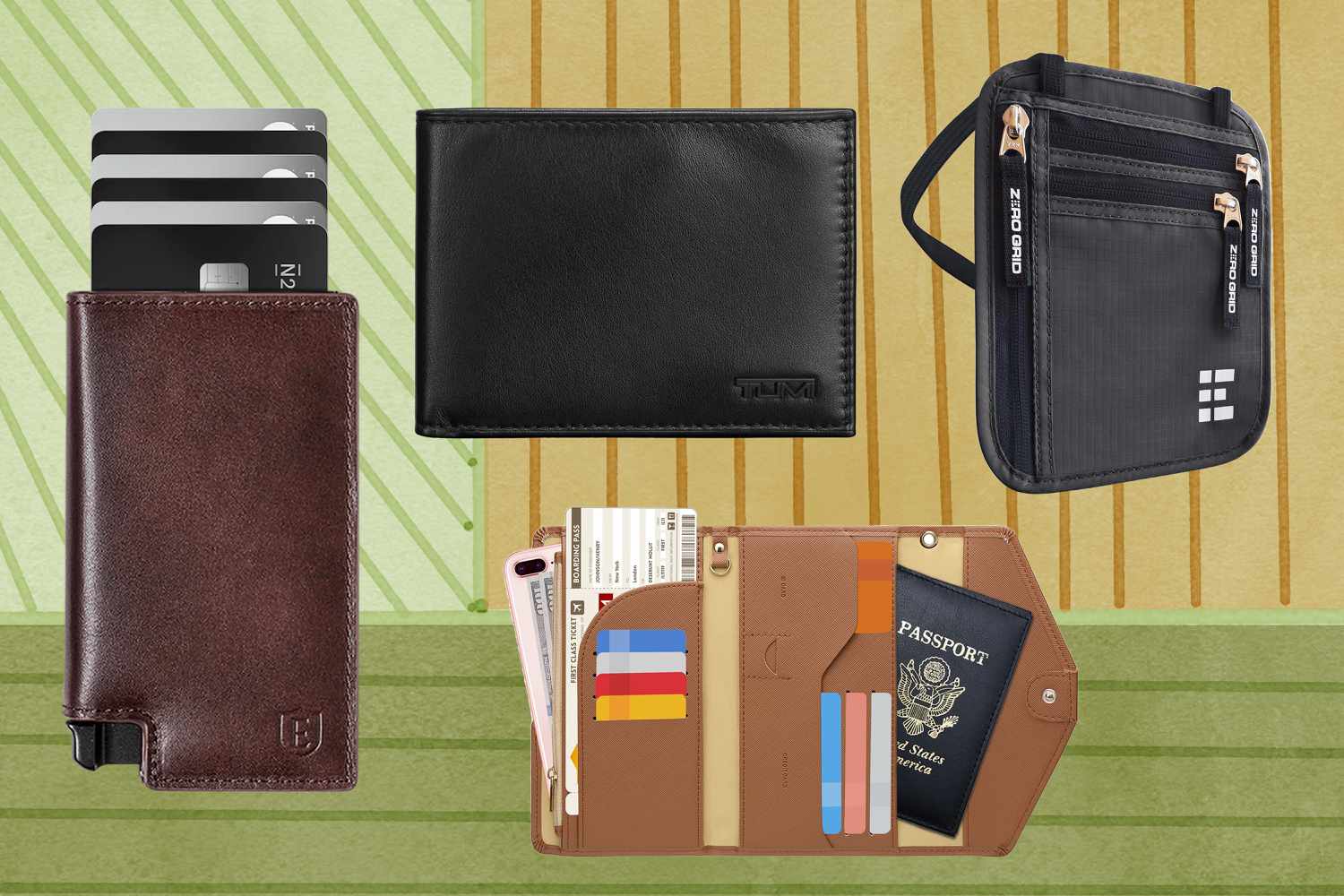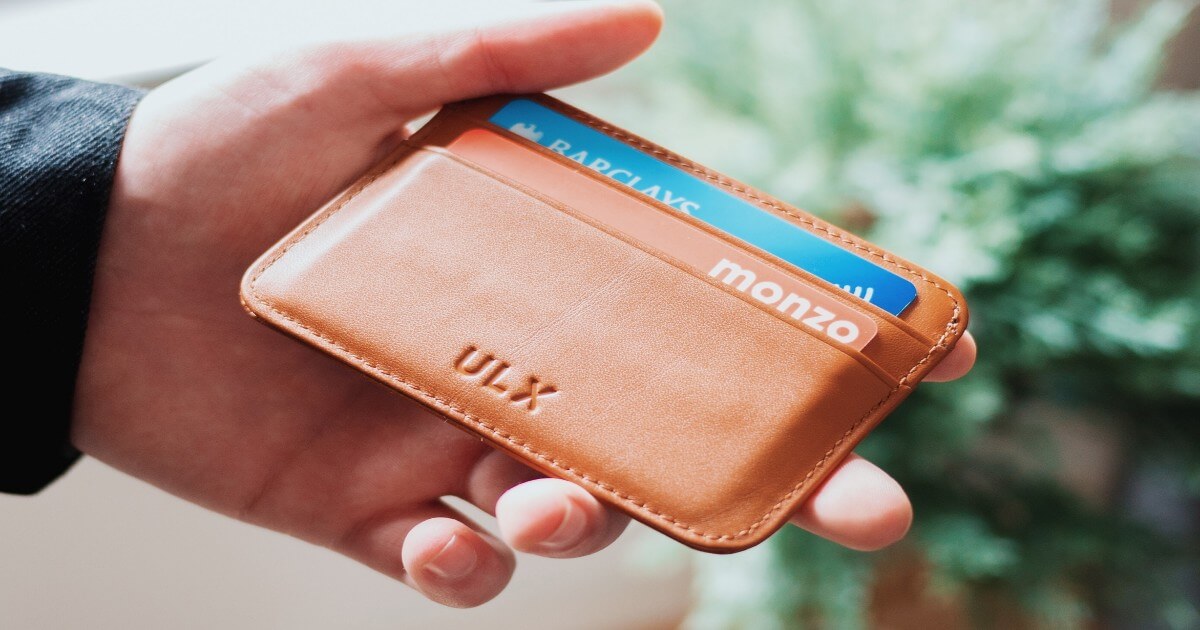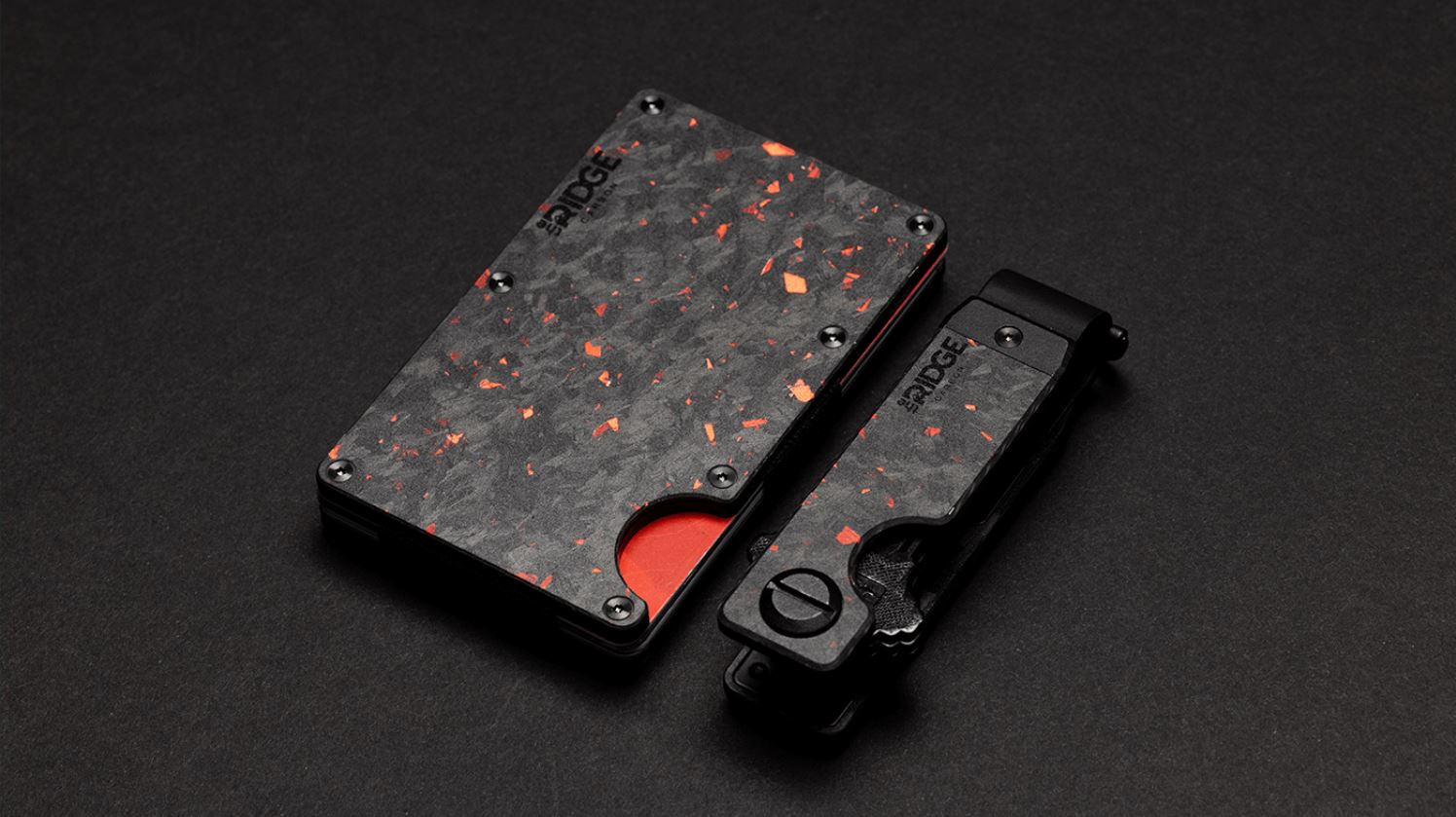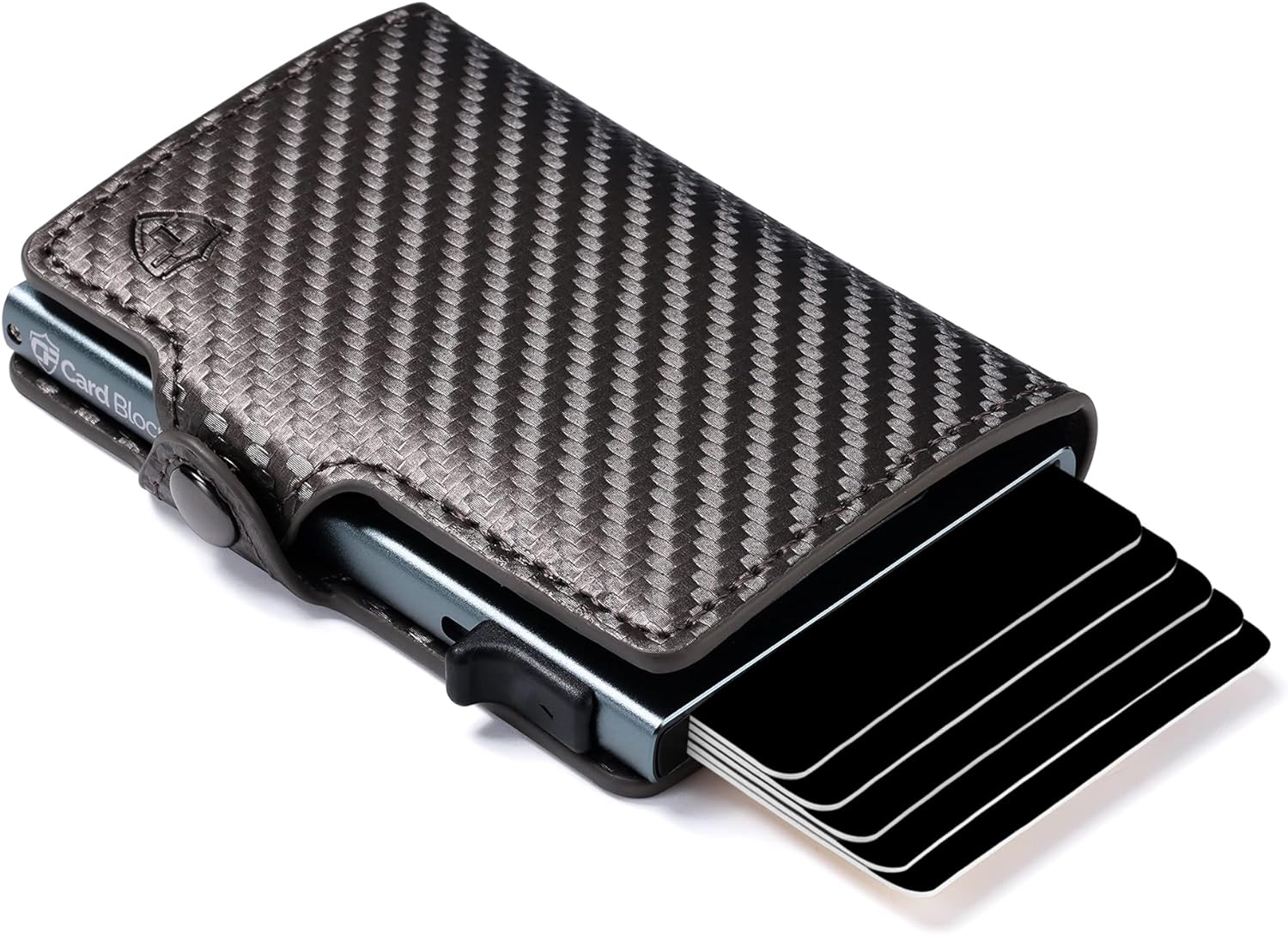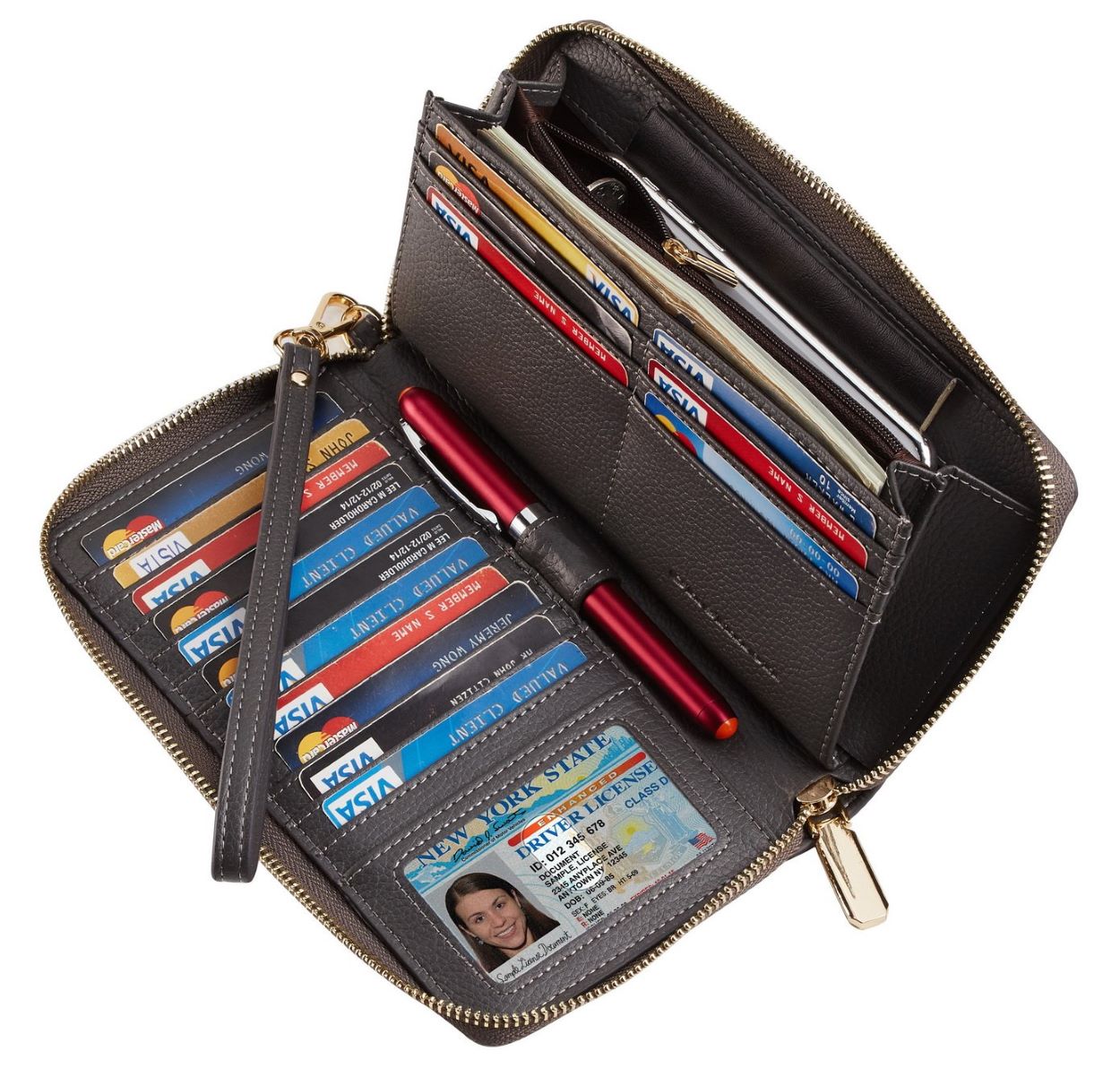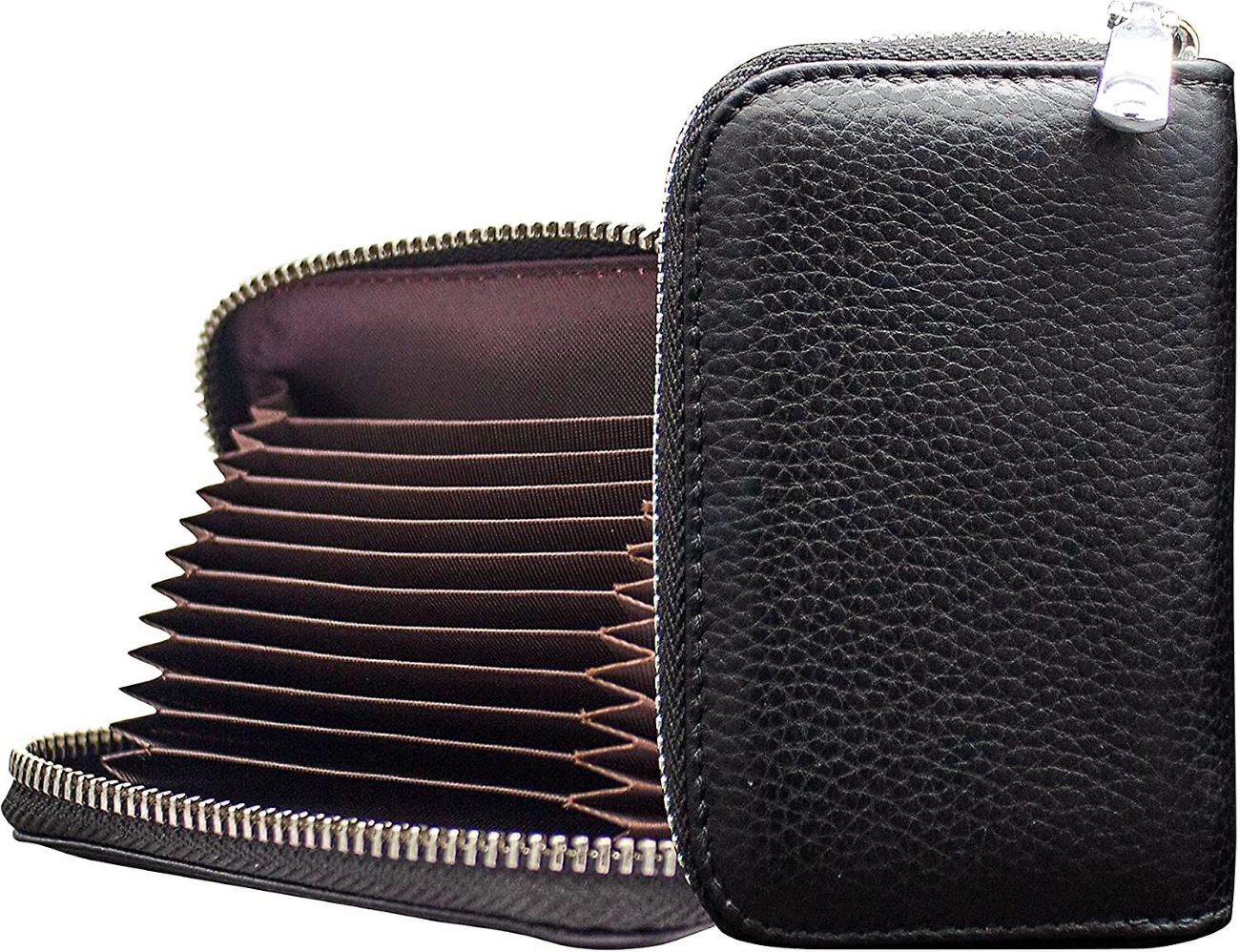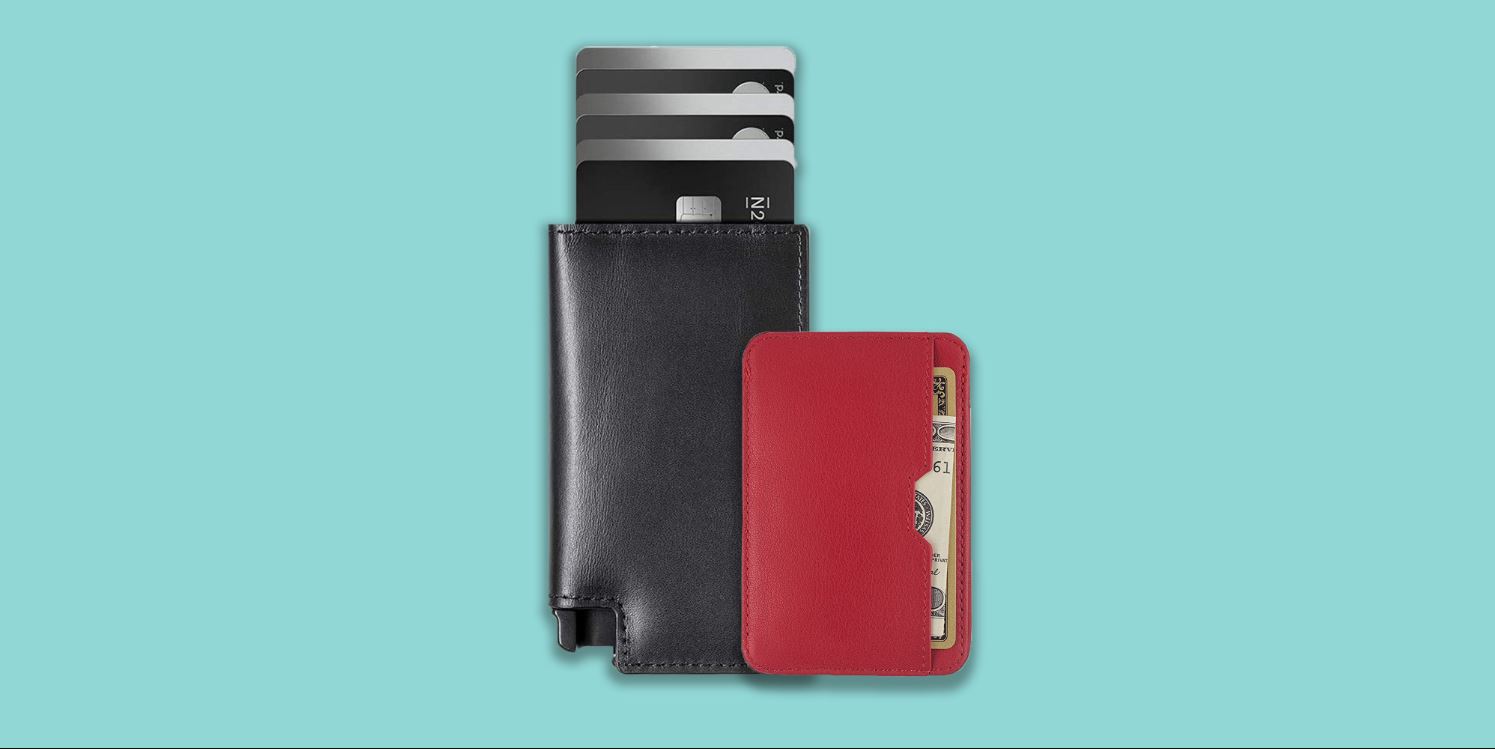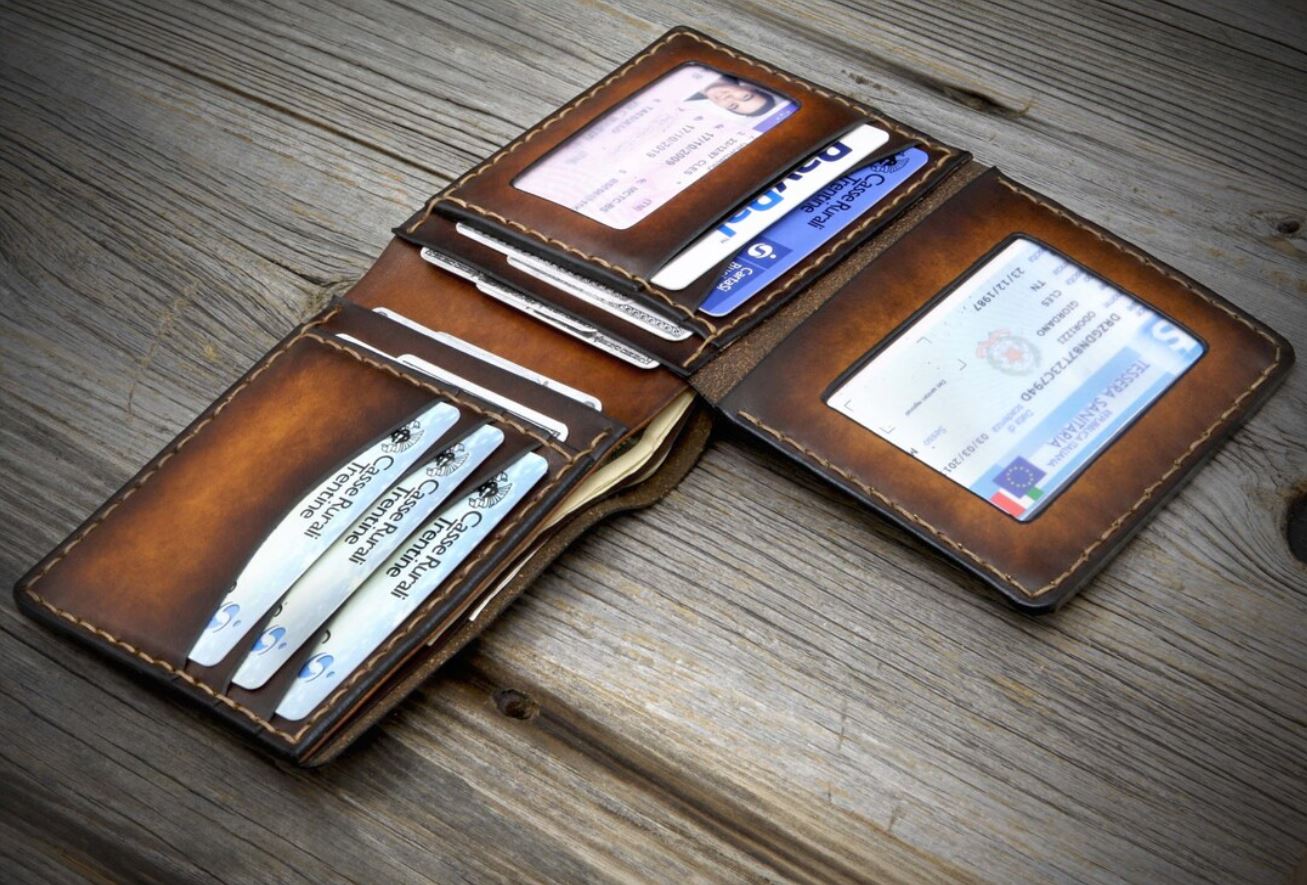Introduction
Welcome to the world of RFID technology! In today’s digital age, our personal information is becoming increasingly vulnerable to security breaches. One area where this is particularly concerning is with our wallets. As more and more people embrace contactless payment methods and use smart devices to store their financial information, the need for RFID protection on wallets has become crucial.
RFID, which stands for Radio Frequency Identification, is a technology that uses radio waves to transmit and receive data wirelessly. Originally developed for inventory tracking and access control purposes, RFID technology is now being integrated into everyday items, including credit cards, debit cards, and identification cards. While convenient, this technology also opens up opportunities for unauthorized individuals to steal our personal information without physical contact.
So, what exactly is RFID? How does it work? And why is RFID protection important for our wallets? In the following sections, we will delve deeper into these questions and explore the various aspects of RFID technology and its impact on our everyday lives. Whether you’re new to the concept or looking to upgrade your wallet to include RFID protection, this article will provide you with the information you need to make informed decisions and keep your personal information secure.
What is RFID?
RFID, which stands for Radio Frequency Identification, is a wireless technology that enables the transmission and reception of data through radio waves. It consists of tags, also known as RFID chips or transponders, and readers or scanners. These tags contain a unique identifier and additional data that can be read by RFID readers when in close proximity.
The RFID system consists of three main components: the RFID tag, the RFID reader, and the backend system. The RFID tag, usually a small electronic chip, is embedded or attached to an object or item. It stores information such as product details, serial numbers, or identification codes. The RFID reader emits radio waves and captures the information stored in the tag when it comes within range.
Unlike barcodes or magnetic strips that require line-of-sight scanning, RFID technology allows for contactless identification and tracking. This means that multiple tags can be read simultaneously, even if they are not in direct line-of-sight of the reader. This makes RFID technology extremely efficient and convenient for various applications, including inventory management, access control, and payment systems.
RFID technology operates on different frequency bands, including low frequency (LF), high frequency (HF), and ultra-high frequency (UHF). Each frequency band has its own advantages and use cases. For example, LF RFID tags are commonly used for animal tracking and entry control, while HF RFID tags are typically found in contactless payment systems and identification cards. UHF RFID tags, with their longer read range and high data transfer rate, are ideal for supply chain management and asset tracking.
In recent years, RFID technology has become more prevalent in our everyday lives. It is now integrated into various consumer products, including credit cards, passports, driver’s licenses, and even clothing. While RFID technology offers convenience, it also raises concerns about privacy and security. Unauthorized individuals equipped with RFID scanners can potentially read and steal personal information without the owner’s knowledge, leading to identity theft and financial fraud.
To address these concerns, RFID protection measures, such as RFID-blocking wallets, have been introduced to prevent unauthorized access to personal information. These wallets feature special shielding material that blocks the radio waves emitted by RFID scanners, effectively protecting the RFID tags inside the wallet from being read. By investing in RFID protection, individuals can enjoy the benefits of RFID technology while maintaining their privacy and security.
How does RFID work?
At its core, RFID technology relies on the exchange of information between RFID tags and readers using radio waves. The process involves three key steps: tag initialization, tag transmission, and reader reception.
In the first step, tag initialization, the RFID tag is programmed with a unique identifier and any additional data that needs to be stored. This programming can be done during the manufacturing process or later, depending on the specific application of the tag. The unique identifier, also known as the Electronic Product Code (EPC), allows for individual item tracking and identification.
Once initialized, the RFID tag is ready to transmit data when triggered by an external source, such as an RFID reader. When the tag comes within the range of a reader, it receives radio waves emitted by the reader’s antenna. These radio waves provide the energy needed for the tag to activate and transmit its stored data.
In the second step, tag transmission, the RFID tag responds to the reader’s radio waves by sending back a signal containing its unique identifier and any other data stored within it. This signal is received by the reader’s antenna and decoded by the reader, allowing the data to be processed and utilized by the backend system. The transmission can occur in a matter of milliseconds, making RFID technology extremely fast and efficient.
The final step, reader reception, involves the RFID reader capturing and processing the signal transmitted by the RFID tag. The reader’s antenna receives the signal and converts it into digital information that can be further processed by the reader’s hardware and software. The decoded data is then sent to the backend system, where it can be used for various purposes, such as inventory management, access control, or financial transactions.
It’s important to note that the range at which RFID tags can be read by readers varies depending on the frequency band being used. LF and HF RFID systems typically have a shorter read range, ranging from a few centimeters to a few meters. On the other hand, UHF RFID systems can have a read range of several meters, allowing for faster and more efficient inventory tracking and identification.
Overall, RFID technology offers a versatile and efficient method of identification and data transmission. Its contactless nature and ability to read multiple tags simultaneously make it invaluable in various industries and applications. However, the widespread use of RFID technology also raises concerns about privacy and security, highlighting the importance of implementing measures such as RFID protection to safeguard personal information.
What is RFID on a wallet?
RFID on a wallet refers to the incorporation of RFID protection technology into traditional wallets. With the increasing use of RFID technology in credit and debit cards, identification cards, and passports, the need for protection against unauthorized access has become crucial. RFID-enabled wallets are designed to prevent the theft of personal information stored on RFID chips embedded in these cards and IDs.
RFID-enabled wallets typically feature a special lining or shielding material made of metal or a conductive fabric that blocks or interferes with the radio waves used by RFID scanners to read and capture data from RFID chips. This blocking material acts as a barrier, preventing the radio waves from reaching the RFID chips inside the wallet and thus protecting the stored information from being accessed by unauthorized individuals.
The RFID protection on a wallet provides peace of mind to individuals who are concerned about their personal information being compromised. It offers an extra layer of security against potential identity theft and financial fraud. By using an RFID-enabled wallet, individuals can go about their daily lives, confident that their sensitive information is protected.
The inclusion of RFID protection in a wallet does not impact its functionality or appearance. RFID-enabled wallets are designed with the same features as traditional wallets and come in a variety of styles, materials, and sizes to suit individual preferences. Whether it’s a sleek leather wallet, a minimalist cardholder, or a spacious travel wallet, there are RFID-enabled options available to cater to different needs.
It’s important to note that not all wallets offer RFID protection. When choosing an RFID-enabled wallet, it’s essential to ensure that it has been tested and certified to provide effective RFID protection. Look for wallets that have undergone independent testing and verification to ensure their performance in blocking RFID signals.
With the prevalence of contactless payment methods and the increasing use of RFID technology in various cards and IDs, investing in an RFID-enabled wallet is an effective way to protect your personal information from potential theft. By choosing a wallet that incorporates RFID protection, you can have peace of mind knowing that your financial and identifying information is secure, allowing you to go about your daily activities with confidence.
Why is RFID protection important?
In today’s digital age, where our personal information is vulnerable to security breaches, RFID protection has become increasingly important. Here are several key reasons why RFID protection is crucial for individuals:
Prevention of Identity Theft: RFID-enabled cards, such as credit and debit cards, passports, and identification cards, contain sensitive information that can be easily accessed by RFID scanners. Without RFID protection, unauthorized individuals equipped with scanning devices can read and capture this information, potentially leading to identity theft. RFID protection helps safeguard your personal data, preventing it from falling into the wrong hands.
Financial Security: With contactless payment methods becoming more popular, the risk of financial fraud is on the rise. Criminals can use RFID scanners to intercept and replicate the data stored on RFID-enabled cards, making unauthorized purchases or draining funds from your accounts. RFID protection on your wallet ensures that your payment cards are shielded from these unauthorized scanning attempts, providing an extra layer of security for your financial transactions.
Privacy Protection: RFID technology allows for the seamless collection and sharing of data, but it also raises concerns about privacy. By having RFID protection on your wallet, you can control the access to your personal information. It ensures that your RFID-enabled cards can only be read when you want them to be, giving you greater control over when and where your information is disclosed.
Peace of Mind During Travel: When you’re traveling, your passport and credit cards are especially vulnerable to theft. RFID protection on your travel wallet or passport holder helps safeguard your important documents from being skimmed or cloned by thieves. It allows you to focus on enjoying your trip without worrying about the security of your personal information.
Long-term Cost Savings: Falling victim to identity theft or financial fraud can be financially devastating. Not only does it cause immediate losses, but it can also lead to a long and expensive process of recovering your identity and repairing your credit. By investing in RFID protection, you are taking a proactive step to prevent such incidents and potentially saving yourself from costly financial repercussions in the future.
In a world where technology continues to advance and information security is of utmost importance, RFID protection is no longer a luxury – it is a necessity. By prioritizing your personal information’s security with RFID-enabled wallets or cardholders, you can protect yourself from identity theft, financial fraud, and privacy breaches, giving you peace of mind in our increasingly interconnected world.
How does RFID protection on a wallet work?
RFID protection on a wallet works by incorporating special shielding material or lining that blocks or interferes with the radio waves used by RFID scanners to read and capture data from RFID-enabled cards and IDs. This shielding material acts as a barrier, preventing the radio waves from reaching the embedded RFID chips and thus protecting the stored information from unauthorized access.
The RFID-blocking material used in wallets is typically made of metal or a conductive fabric. This material creates a Faraday cage effect, which effectively blocks the electromagnetic waves used in RFID communication. When an RFID-enabled card or ID is placed inside an RFID-protected wallet, the shielding material forms a protective barrier, significantly reducing the range at which the RFID chip can be read by unauthorized scanners.
The RFID-blocking material in an RFID-protected wallet works by absorbing or reflecting the radio waves emitted by RFID scanners, preventing them from reaching the RFID chip and reading the data stored on it. The shielding material can also disrupt the electromagnetic field required for the RFID scanner and the RFID chip to communicate effectively, further enhancing the protection provided by the wallet.
It’s important to note that RFID protection on a wallet does not completely disable RFID technology. The RFID-blocking material only disrupts the communication between RFID chips and scanners when the wallet is closed or when cards are properly placed inside the wallet. When you need to use a card, simply open the wallet and remove it. This allows the RFID chip to communicate with authorized readers as intended.
To ensure the effectiveness of RFID protection, it’s crucial to choose a wallet that has been tested and certified for its RFID-blocking capabilities. Look for wallets that have been independently tested and meet recognized standards, such as ISO/IEC 14443 for contactless smart cards and ISO/IEC 15693 for vicinity cards. These certifications ensure that the wallet provides reliable RFID protection against unauthorized scanning attempts.
By investing in an RFID-protected wallet, you can enjoy the convenience of RFID-enabled cards and IDs while having peace of mind knowing that your personal information is secure. Whether it’s an everyday wallet, a travel wallet, or a cardholder, the RFID protection ensures that your sensitive data is shielded from potential identity theft, financial fraud, and privacy breaches.
Benefits of RFID protection on a wallet
RFID protection on a wallet offers several significant benefits that ensure the safety and security of your personal information. Let’s explore some of the key advantages:
1. Protection against identity theft: RFID-enabled cards carry sensitive personal and financial information that can be easily accessed by unauthorized RFID scanners. By using an RFID-protected wallet, you create a shield that blocks these scanners, safeguarding your data from potential identity theft.
2. Prevention of unauthorized transactions: RFID-blocking wallets prevent unauthorized individuals from scanning your payment cards and making unauthorized transactions. This protection ensures that your financial information remains secure and reduces the risk of fraudulent activity.
3. Privacy preservation: RFID protection provides an added layer of privacy by allowing you to control when and where your cards can be scanned. This allows you to maintain control over your personal information, protecting your privacy in highly populated areas or public transportation.
4. Peace of mind during travel: Traveling often involves carrying multiple RFID-enabled documents, such as passports, credit cards, and boarding passes. RFID protection on your travel wallet or passport holder ensures that your important information remains secure, even in crowded spaces or high-risk areas.
5. Simplified card organization: RFID-enabled wallets often come with multiple card slots and compartments to keep your cards organized. This feature makes it easier to access and manage your cards, ensuring that you can find the right one quickly and efficiently.
6. Durability and style: RFID-protected wallets are designed to be both functional and stylish. They are made from high-quality materials, such as leather or synthetic fabrics, ensuring durability and longevity. Additionally, they come in a variety of designs and colors, allowing you to choose a wallet that suits your personal style.
7. Cost-effective protection: Investing in an RFID-protected wallet is a cost-effective way to protect your personal information. The potential financial and emotional costs of identity theft and fraudulent activity far outweigh the initial investment in a reliable RFID-blocking wallet.
8. Compatibility with modern technology: RFID-protected wallets are designed to be compatible with the latest RFID technology. They can protect various types of RFID-enabled cards and documents, including credit cards, debit cards, passports, and identification cards.
In a world where technology continues to advance and personal information security is paramount, RFID protection on a wallet is an essential investment. By utilizing RFID-blocking technology, you can ensure the safety of your personal information, avoid identity theft, protect your financial well-being, and enjoy peace of mind during your daily activities and travels.
Conclusion
In today’s digital age, where our personal information is increasingly vulnerable, RFID protection on a wallet has become essential. RFID technology, while convenient, also presents potential risks, such as identity theft and financial fraud. By investing in an RFID-protected wallet, you can safeguard your personal information, protect your financial well-being, and enjoy peace of mind in your daily activities and travels.
RFID-enabled wallets utilize special shielding materials that block or interfere with the radio waves used by RFID scanners to read and capture data from RFID chips. This shielding material forms a protective barrier, preventing unauthorized access to your sensitive information. With the increasing use of RFID technology in credit cards, debit cards, passports, and identification cards, RFID protection on a wallet ensures that your personal data remains secure and inaccessible to unauthorized individuals.
The benefits of RFID protection on a wallet are numerous. It protects against identity theft by preventing unauthorized RFID scanners from accessing your personal information. It also prevents unauthorized transactions, reduces the risk of fraudulent activity, and allows you to maintain your privacy. RFID protection is particularly beneficial during travel, where multiple RFID-enabled documents are carried. It ensures that your important information remains secure, even in crowded or high-risk areas.
Beyond security, RFID-protected wallets offer functionality and style. They provide organized compartments for your cards, making it easier to access and manage them. Additionally, they are crafted from durable materials and come in various designs, allowing you to choose a wallet that suits your personal style.
Investing in RFID protection on a wallet is a cost-effective measure to protect your personal information. The potential financial and emotional costs of identity theft and fraudulent activity far outweigh the initial investment in a reliable RFID-blocking wallet. Additionally, RFID protection is compatible with modern technology, ensuring that your wallet can protect various types of RFID-enabled cards and documents.
In conclusion, RFID protection on a wallet is an invaluable tool in today’s world. It provides a sense of security, privacy, and peace of mind in our increasingly interconnected digital landscape. By choosing an RFID-protected wallet, you can confidently go about your daily activities, knowing that your personal information is secure and protected.







